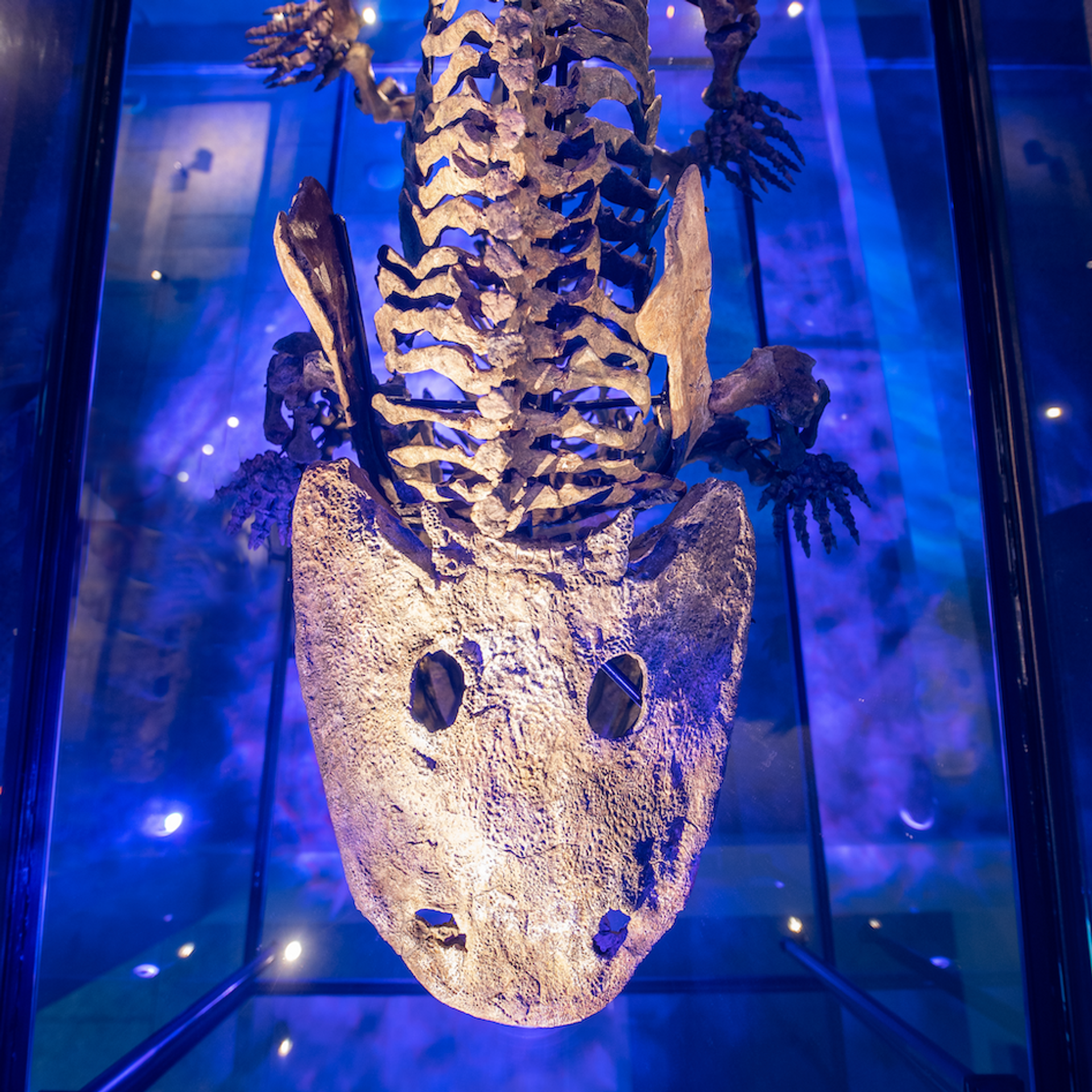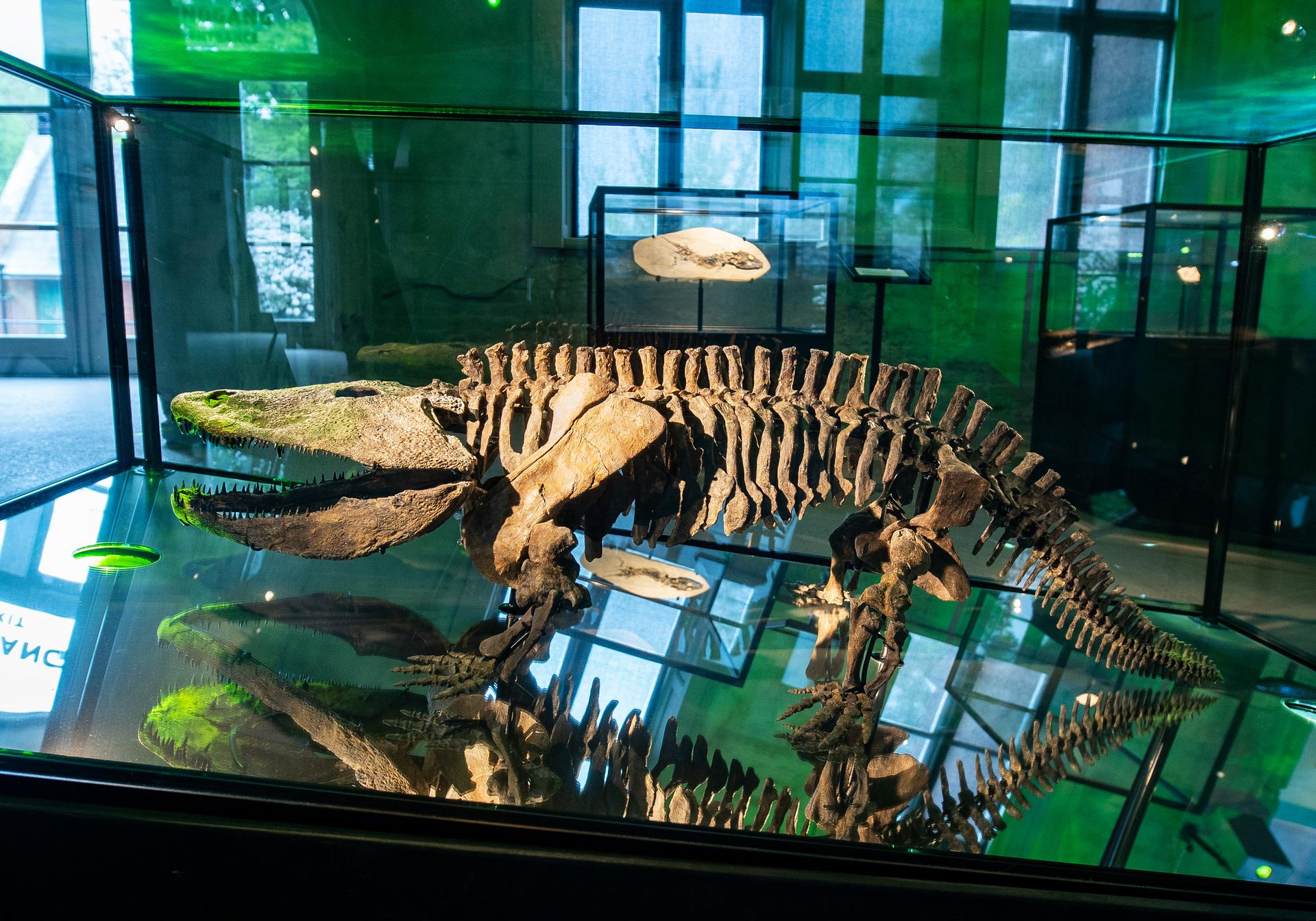Eryops megacephalus
A terribly large toad

The climate in the Permian period was variable and there were long periods where the otherwise desert-like conditions were replaced by a humid and steamy swamp environment. Down in the swamps of the Permian period Eryops could be found, which closely resembled a huge toad. But even though Eryops belongs to a distant branch of the same family as today’s amphibians (frogs and toads), it was far from similar to the cute little toads you might find on a visit to Bøllemosen.
Eryops was a 200 kg predator with an abnormally large mouth filled with pointed teeth. The anatomy of its huge mouth suggests a method of feeding in which the animal would clutch its prey and thrust forward, throwing the prey further back into its mouth. It is only because Eryops primarily lived in and around water that it did not come into conflict with the other top predator of the time, Dimetrodon, which was more dominant inland. As an adult, Eryops was 3 metres long, and this species, Eryops megacephalus, had a head that measured more than half a metre long.
Eryops belongs to the group of animals now known as amphibians, consisting of frogs, toads and salamanders. Amphibian means “double life”, implying that amphibians live both on land and in water just as Eryops did.
In the gallery you'll find a bone-map of the exhibited Eryops megacephalus. The red-highlighted areas indicate which bones is real.
Facts about Eryops megacephalus
Size: Up to 3 metres long
Weight: Up to 200 kg
Period: Early Permian Period (299–278 million years ago)
Food: Carnivores
Habitat: On land and in water
Locations: Texas and New Mexico
